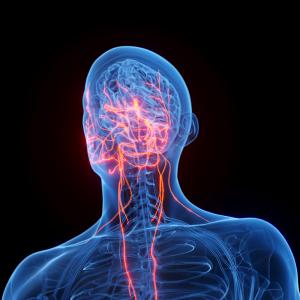Study May Speed Improved Treatments for Hearing Loss & Symptoms of PTSD
Researchers at NYU Langone Medical Center have found how even brief exposure to sudden sounds or mild trauma can form permanent, long-term brain connections, or memories, in a specific region of the brain. Moreover, the research team, working with rats, says it was able to chemically stimulate those biological pathways in the locus coeruleus—the area of the brain best known for releasing the “fight or flight” hormone noradrenaline—to heighten and improve the animals’ hearing.
The NYU team says their new study, summarized in the cover article in the journal Nature Neuroscience online August 24, is believed to be the first to explore an apparent connection between hearing and memory formation in the locus coeruleus as well as the first to successfully improve hearing in rats by manipulating the centrally located brain region whose neural network projects throughout the body.
“Our study gives us deeper insight into the functions of the locus coeruleus as a powerful amplifier in the brain, controlling how and where the brain stores and transforms sudden, traumatizing sounds and events into memories,” says senior study investigator and neuroscientist Robert C. Froemke, PhD, an assistant professor at NYU Langone and its Skirball Institute of Biomolecular Medicine. “Our findings, if confirmed by future studies in animals and people, should help us better understand how to improve hearing and memory abilities in those suffering from hearing loss or possibly even Alzheimer’s disease, as well as how to alter or minimize memories involved in disorders like post-traumatic stress disorder.”
According to the investigators, their findings provide insight into how and where traumatizing events stick in our minds and may possibly explain why it may take years to learn dates in history class but only seconds to develop post-traumatic stress disorder, or PTSD, from a shock or sudden event. They also say these study results may help explain how electrical impulses, such as those produced by cochlear implants for the hearing impaired, can better be used to improve hearing, and how traumatizing memories can be reshaped or dampened to lessen symptoms of PTSD.
As part of the Froemke team’s four-year investigation, led by Ana Raquel O. Martins, PhD, PharmD, the researchers chemically stimulated the locus coeruleus in rats while simultaneously playing them a sound paired with a food reward. After a two-week training period to ensure that the rats associated the sound with food, the same sound was played much more quietly. The researchers recorded activity in the same regions of their brain, as well as in the auditory cortex area responsible for interpreting sounds. They found that the locus coeruleus and auditory cortex still responded to the sound, even at nearly imperceptible levels, for the subsequent and remaining two weeks of the experiments.
However, chemically stimulating the locus coeruleus led to 100 percent neural activity in the auditory cortex, even in the absence of the same triggering sounds. Neural activity in the auditory cortex in response to the sounds was at least 10 times greater than when activity in the locus coeruleus was chemically suppressed.
According to Froemke, the results clearly demonstrate that the memory of the sound and its associated reward was encoded by the locus coeruleus, which helped improve the rats’ ability to perceive the sound.
In another set of experiments, the investigators paired a specific sound with a series of mild shocks to the animals and found that when the shocks stopped, but the sound continued to play, their locus coeruleus response remained the same, at 20 neuron spikes per second.
Froemke says he next plans to investigate how information is encoded within the locus coeruleus and to identify which cells are activated by cochlear implants and in animal models of PTSD. He is also planning experiments to identify patterns formed in the locus coerelus during other behavioral events involving hearing, such as mothers responding to the cries and calls of their offspring.
Funding support for the study was provided by the National Institute on Deafness and Other Communication Disorders grants DC009635 and DC012557, the Hirschl/Weill-Caulier Career Research Award, the Sloan Research Fellowship, and the Portuguese Foundation for Science and Technology.

